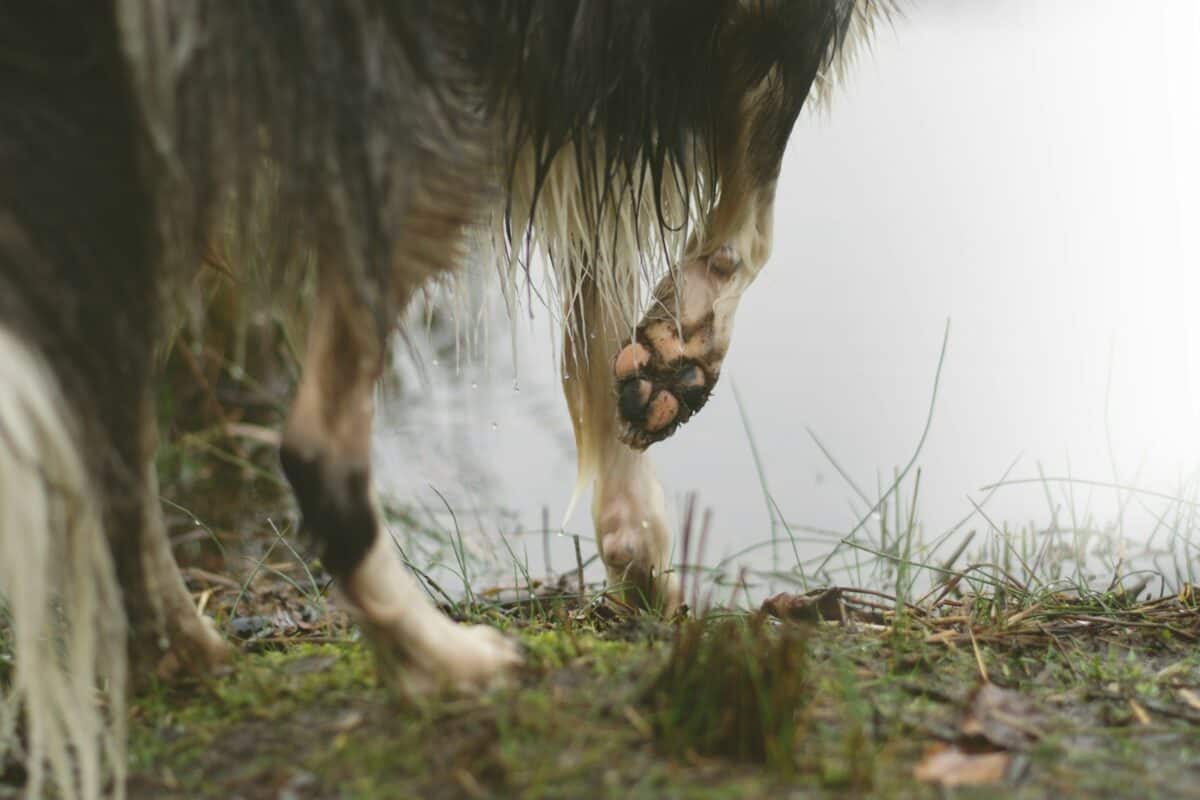Weather changes can be disruptive, not only for humans but also for our four-legged friends. Dogs, with their acute senses and unique physiological makeup, often respond more vividly to shifts in climate, temperature, and atmospheric pressure. Understanding how these changes affect your pup can help you provide better care and comfort. Let’s explore the telltale signs that your dog might be struggling with weather changes and how you can assist in making their transition smoother.
12. Trembling or Shivering

If you notice your dog trembling or shivering, it might indicate their discomfort with sudden temperature drops. Like humans, dogs shiver to generate warmth as a response to cold weather. Smaller breeds or those with short coats are more susceptible to feeling the chill. Providing a cozy blanket or sweater can help alleviate their discomfort during the colder months.
11. Excessive Shedding

Changes in weather can prompt your dog’s body to adjust its coat. Excessive shedding is often a sign that your pet’s body is responding to seasonal transitions. If you notice more fur around your home, it might be time to groom your dog more frequently to help manage this natural process and keep them comfortable.
10. Lethargy

Noticeably sluggish behavior could be due to extreme weather conditions. Heat and humidity can particularly drain a dog’s energy. During such times, ensure that your pet stays cool and hydrated. For cold weather lethargy, create a warm, inviting space and encourage gentle activities to keep them engaged.
9. Restlessness

On the other end of the spectrum, some dogs might become restless during weather changes. The unsteady conditions can confuse them, leading to pacing, barking, or destructive behavior. Patience and routine engagement with play or training sessions can help sooth their restlessness.
8. Excessive Panting

Panting is a normal behavior for dogs to cool down. However, excessive panting may indicate heat stress or anxiety about the changing weather. During hot spells, ensure your dog has plenty of water and shade. For anxiety, offering a quiet, comforting space can help calm their nerves.
7. Seeking Extra Attention

If your dog is more clingy or seeking out extra attention, it might be their way of communicating discomfort. Dogs often look to their owners for reassurance when something feels off. Offering snuggles, and speaking soothingly can reassure your dog they are in a safe environment.
6. Change in Appetite

Weather changes can influence your dog’s appetite. Some may eat less in the heat, while others might want more food to generate body heat during the cold. Monitor their intake and adjust feeding portions accordingly, ensuring they receive a balanced diet suitable for their activity level and weather conditions.
5. Aggression or Irritability

Weather fluctuations can heighten discomfort, leading to unusual aggressive or irritable behaviors in dogs. Recognizing this is crucial to ensure safety for both your pet and those around them. Avoid stressful situations and consider consulting a veterinarian if this behavior persists.
4. Hiding or Seeking Shelter

When dogs are uneasy, they might seek hidden or unfamiliarly enclosed spaces as a retreat from uncomfortable weather changes. Ensure that your dog has access to a safe, comfortable place in your home where they can retreat and feel protected from the elements.
3. Paw Lifting or Avoiding Surfaces

During extreme weather, pavement and other surfaces can become too hot or too cold for a dog’s sensitive paws. If your dog is lifting their paws frequently or resisting walks, it may be a sign of discomfort from these surfaces. Consider protective footwear for your dog or adjust your walk schedule to cooler or warmer times of the day.
2. Scratching or Itching

Changes in humidity and temperature can lead to dry skin, resulting in increased scratching or itching. Make sure your pet is well-hydrated and consider introducing a skin-conditioning supplement or specially formulated dog lotions to their routine to alleviate this issue.
1. Yawning or Sneezing

Frequent yawning or sneezing might not just be a sign of boredom or a sniffle. These could be indicators of discomfort due to atmospheric pressure changes associated with incoming weather fronts. Monitor other accompanying behavior changes and adapt their environment to minimize stress.
In conclusion, dogs, much like humans, can experience unease with the weather’s ebb and flow. By being observant of your dog’s behavior and making a few adjustments to care, you can ensure your furry friend stays happy and healthy, regardless of the weather outside. Remember, a little sensitivity to your pet’s needs can go a long way in keeping their tail wagging all year round.
- 12 Signs Your Dog Is Struggling with Weather Changes - August 11, 2025
- The Record-Breaking Hammerhead Shark Spotted Near Texas - August 11, 2025
- The Largest Anaconda Ever Spotted in the Amazon - August 11, 2025

